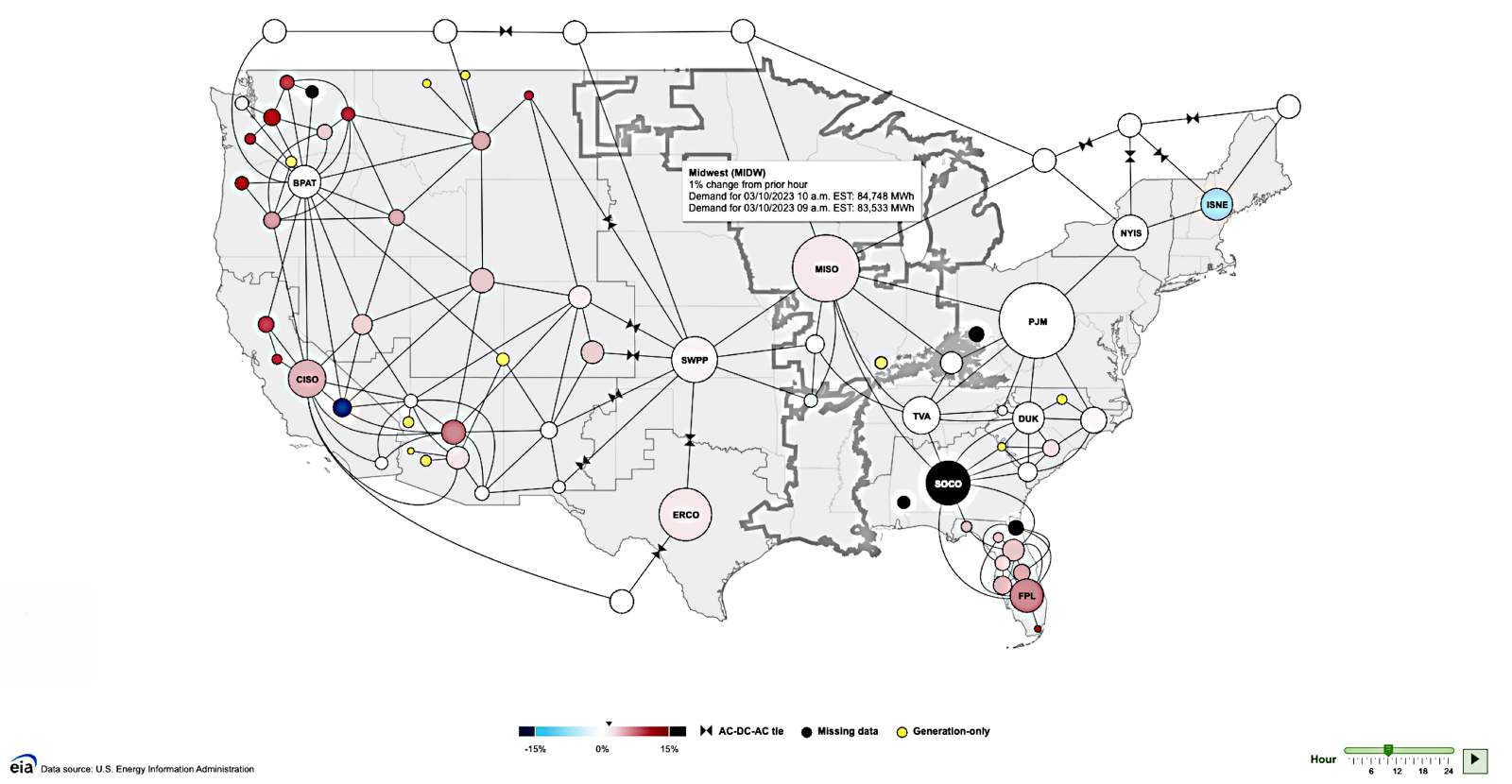Energy Customers Want Transparent, Precise, Reliable Emissions Data

By Leigh Yeatts and Sam Pearl Schwartz
Energy customers need more detailed and accurate information about the electricity they buy, to encourage and expand their voluntary purchases that help decarbonize the electric grid.
Just as federally required nutrition labels empower U.S. consumers to make informed purchasing decisions and help create transparency that drives improved food quality, energy customers need granular emissions information to make informed decisions that allow them to rapidly expand their energy purchases’ impact in electricity sector decarbonization. Since 2014, commercial and industrial customers have procured 64.5 gigawatts of clean energy, amounting to 41% of all new clean capacity additions across the United States.
Today’s customers rely on a mix of fragmented, often incomplete, and time-delayed data from the U.S. Energy Information Administration (EIA), U.S. Environmental Protection Agency (EPA), regional transmission organizations (in markets where these exist), and local suppliers to understand the emissions associated with the electricity that they are consuming from the grid. For some customers, this means trying to gather and compare data from hundreds of different utilities and entities.
Customers want to drive greater emissions reductions through their procurement and operational decisions but are hindered by the lack of comprehensive data. Accurate location- and time-specific electricity emissions intensity data would help energy customers to make informed and impactful clean energy transactions. This data access would enable customers to:
- make energy procurement decisions that target the most carbon-intensive locations and times of day;
- perform carbon-optimized load-shifting, such as through the operation of energy storage and other flexible generation technologies;
- assess the best time to charge electric vehicle fleets to maximize decarbonization value; and
- invest in the use of clean hydrogen that is matched to hourly clean generation.
The Clean Energy Buyers Association (CEBA) and its members in recent years have been working with Congress and other federal policymakers as well as federal, regional, and state data providers to facilitate creating a reliable, harmonized data system that empowers all energy customers to maximize emissions reductions. Sections 40412 and 40419 of the federal Bipartisan Infrastructure Law direct the Energy Information Administration (EIA) to establish an online database to track the operation of the bulk power system. The database must include hourly data on emissions and resource mixes for all U.S. electricity balancing authorities, at the marginal emissions level where possible, and harmonize that database with existing federal databases.
With this detailed greenhouse gas emissions data, the EIA will be able to provide reliable, public information detailing the real-time climate impact of electricity deployed on the nation’s grid. In early 2023, the EIA made some initial progress by publishing hourly data on carbon-dioxide emissions intensity at the balancing authority level, and at the subregional level for many large balancing authorities.
While the Bipartisan Infrastructure Act provided the Energy Information Administration with the directive to collect and report this electric grid data, the agency lacks funding in its 2023 budget to build on the existing hourly data and produce the marginal emissions data. The Clean Energy Buyers Association (CEBA) supports properly resourcing EIA for fiscal year 2024 at a funding level that will allow EIA to implement its data harmonization and dashboard requirements under the Bipartisan Infrastructure Law.
Outreach is key to ensuring the EIA gets the additional support it needs from Congress and the Department of Energy. Policymakers need to hear from energy customers why this granular, harmonized data is necessary and why the EIA should prioritize and receive additional funding for this effort. If you are interested in learning more about CEBA’s efforts to drive access to more detailed emissions data or you would like to discuss how to maximize the impact of your outreach, please contact Leigh Yeatts at lyeatts@cebuyers.org.
